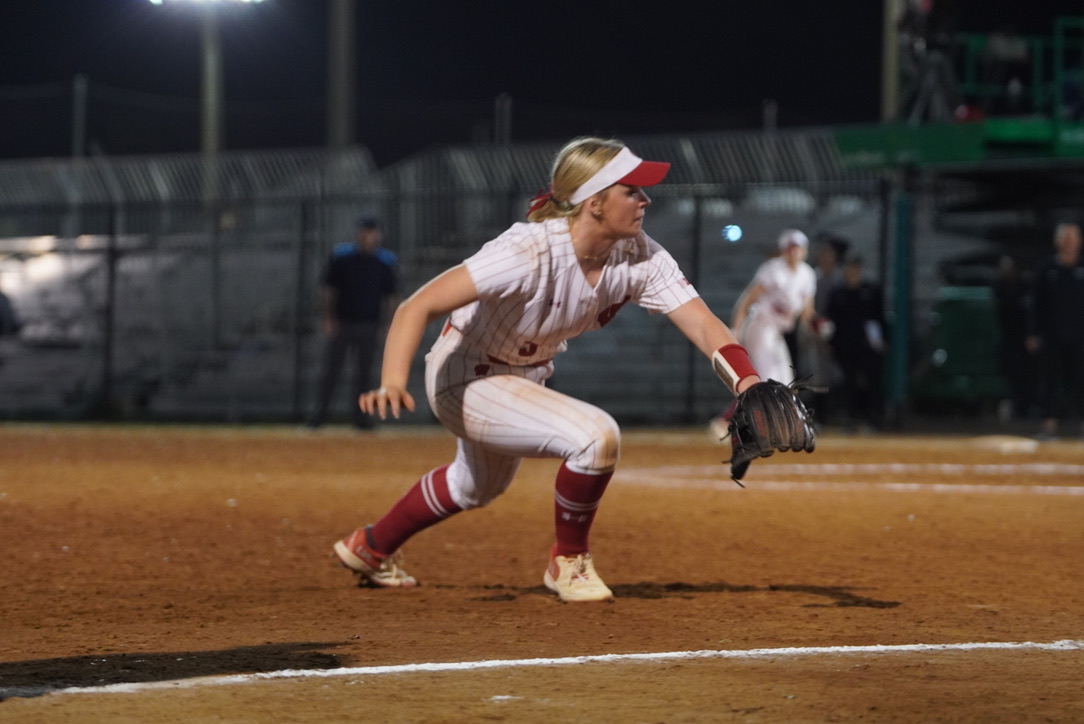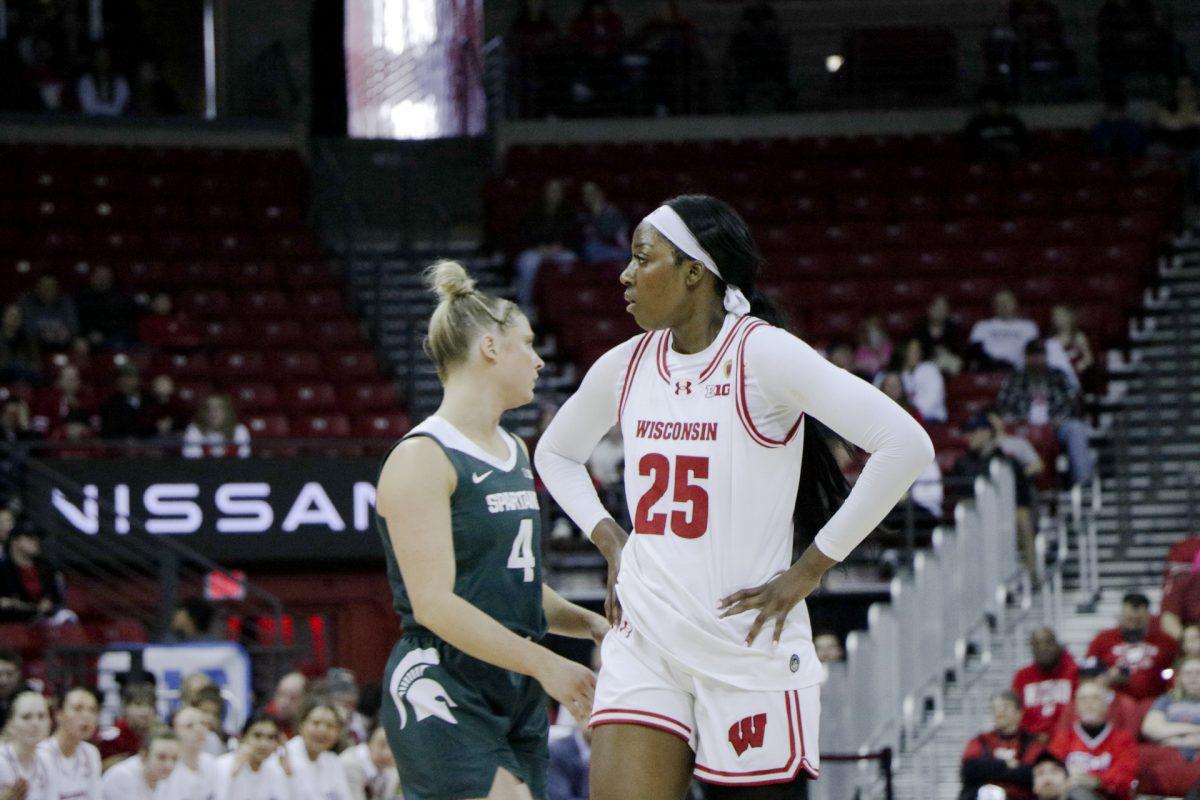Gary Andersen shocked the entire state of Wisconsin and his team Dec. 10, 2014 when he bolted from Madison to become the head coach at Oregon State.
Just three days removed from a humiliating 59-0 loss to Ohio State in the Big Ten Championship Game, Badger fans were dumbfounded. In spite of that thumping, Andersen had won 19 games and a Big Ten West division title in his first two seasons at the University of Wisconsin helm.
No one saw this coming — not even Wisconsin Athletic Director Barry Alvarez. There were layers to this and they began to peel back.

Five weeks after Andersen jettisoned to Corvallis, where he’s the head coach of a team that serves as the little brother to Oregon and consistently finishes in the bottom half of the PAC-12, he divulged to CBS Sports’ Dennis Dodd one of the main reasons he left UW: he couldn’t get the recruits he wanted into the school.
“It’s been well [documented] there were some kids I couldn’t get in school,” Andersen said in the article. “That was highly frustrating to me. I lost some guys, and I told them I wasn’t going to lose them.”
The questions swirled. Why, suddenly, were admissions affecting the recruiting process? It’s a narrative that came to a head during Big Ten Media Day this summer and will likely continue well in to the future, because for now, no one really knows the definition of these standards.
The admissions process
UW is an academically reputable institution. Year after year, it checks in as one of the top public research universities in the nation and even the world. Forbes ranked UW the No. 11 public university in 2015 and U.S. News & World Report ranked Wisconsin 41st overall. UW accepted 49.8 percent of its applicants in 2015, according to U.S. News & World Report.
When reviewing applications, all students are held to a similar high standard, even student athletes, Provost and Vice Chancellor for Academic Affairs Sarah Mangelsdorf said in a statement to The Badger Herald.
UW uses a competitive and comprehensive admissions process with the Admissions Office, Athletic Department, faculty, schools and colleges working together to ensure they take a fair and consistent approach to admissions, Mangelsdorf added in the statement.
The holistic approach reviews academic preparation, life experience, leadership and volunteer activities, along with special talents and other factors. This approach is applied consistently to all students, including student-athletes, she said.
The phrase “special talents” is key to understanding the athletic admissions process, as it’s a term often repeated by fellow university officials.
Athletes at UW fill out the same application every other student does. They send their ACT and SAT scores, their grade-point averages and answer the essay questions.
Admissions isn’t necessarily aware of every applicant, who may also be a prospective athlete, applying to UW. But the Athletic Department — and several other departments, like the Music Department — sends a list of recruits, Chancellor Rebecca Blank said in a previous interview with The Badger Herald. Then admissions sends back the list of candidates with the office’s decision. Department officials can request a conference with the Admissions Office to review an application’s status.
“[They] talk about the case and what this individual will bring to campus and sort of basically plead their case,” Blank said.
The process may seem ambiguous, but Blank made one important aspect clear: the final decision lies in the hands of the Admissions Office.
Acceptance and denial
Joe Schobert had his car packed, his roommate picked out and was fully prepared to begin his collegiate career at North Dakota.
Four summers ago, the Badgers had hardly looked at the Waukesha West standout, who broke John Clay’s state high school record for rushing yards in one game. Finally, then-head coach Bret Bielema offered him a walk-on spot. But he hadn’t applied to UW during his initial college search and needed to get his application in as soon as possible.
So Schobert, a solid high school student, applied. He waited, patiently at first, then anxiously. He got a call from Bielema the night before he was set to embark for North Dakota, saying there shouldn’t be a problem with his application.
“[The application] wasn’t even through by then, but [Bielema] said he had gotten word that it shouldn’t be a problem, so I would get in,” Schobert said. “So I was like, ‘OK, take a leap of faith.’ But hey, it worked out.”
Schobert’s admissions experience is unusual. Any student who has applied to UW knows the admissions decision rarely comes in the matter of weeks. Even more of an aberration is the fact Schobert applied during the summer, well past the Feb. 1 deadline.
The coaching staff recognized Schobert had an exceptional football talent that could potentially benefit the university — so far in his senior season, the senior linebacker ranks second on the team in tackles (53) and is tied for third in the nation in sacks (9.5) — and solid grades, so the Athletic Department and the Admissions Office got to work.

It’s a cohesive process between the two departments, Doug Tiedt, senior associate athletic director for student services, said.
“We work together closely,” Tiedt said. “We monitor student applications and just [keep] up to date on when they have all the information in.”
Senior Associate Director of Admissions Andre Phillips said the Admissions Office has two goals when admitting any student to the university. The first is the student will excel academically. The second, which could pertain to athletics, is the applicant will contribute to the Badger culture — they will make a difference here on campus and beyond.
“I think there’s a shared understanding of what we do,” Phillips said of the two departments’ relationship.
Special talents do not absolve poor academic performance, Phillips said. Admissions looks to see if students have had a solid academic foundation, which would allow them to succeed on campus.
Despite the symbiotic relationship between the departments, tensions obviously arise. Sometimes, potential student-athletes are denied admission to the university. The university rejected four-star running back Jordan Stevenson’s application in July. He wound up at Nebraska, poised to compete against Wisconsin over the next few years, much to the chagrin of the Badgers coaching staff.
But last week, Stevenson quit the team after appearing in three games. The question of whether Stevenson would have succeeded at UW will never be answered, but he won’t be making an impact, at least for this season, on any team.
Tiedt said regardless of how coaching staffs feel about recruits, they have to respect the Admission Office’s decision because they’re the experts.
“Are there instances when admissions and Athletics disagree on the potential of a student? Of course there are,” Tiedt said. “But those instances [are] ones in which admissions makes a decision, it’s their decision, they’re the experts in determining whether the student is an appropriate fit for the university and if it’s determined that he or she isn’t, then that’s the decision.”
Through an open records request filed with the university, the Badger Herald obtained the standardized test scores (ACT and SAT) of all 112 players on the Wisconsin football team’s 2015 roster. Under the Family Educational Rights and Privacy Act (FERPA), the identities of the student-athletes were not disclosed.
Of the 112 players, 15 sent only their SAT scores to satisfy the standardized testing requirement portion of the application. The median score was a 1410, and more than half of those 15 Badgers had a three-part score of less than 1500.
The median and mean ACT Composite score among the remaining players was a 23. On the university’s “Recruitment and Expectations” web page, it states “admitted students will typically score between 27-31 on the ACT and 1840-2050 on the SAT, although there is no minimum required score.”
Seventy-two UW players had an ACT score of less than 27, falling below the low end of the university’s proclaimed “typical score” mark. Of the 15 who only submitted the SAT, only one player fell into UW’s desired range, with a score of 1900.
On the ACT, 29 student-athletes came in below the national average of a 21 and 37 checked in behind the Wisconsin state average of 22. Nine student-athletes finished with ACT scores of 30 or higher, with the highest being 33 (one player).
Academic success
The Wisconsin football team has reached a bowl game every season for the last 13 years, but the Badgers have also found tremendous success in the classroom, proving that standardized testing is not necessarily an indicator of future academic proficiency.

The NCAA releases Academic Progress Rate rankings, which measures the academic success of student athletes at every Division I institution, every year. Over the past three years, the UW football team ranked first, coming in front of other notable academic institutions like Stanford, Duke, Northwestern and Michigan in that time span. The football team is one of just six schools to finish in the top 10 percent of APR rankings over the last three years.
Last year, UW football, men’s basketball, men’s golf, men’s tennis, women’s golf, women’s hockey, softball and volleyball all achieved perfect APR scores.
Tiedt said recruiting academically strong athletes makes coaches’ jobs easier.
“It doesn’t do Wisconsin coaches any good to have students who they recruit who aren’t successful and they aren’t here after a year or two,” Tiedt said. “You don’t win with teams like that.”
That thought process can be seen in the way the UW basketball team plays under Bo Ryan. Ryan’s style requires a mental aptitude to grasp the basics of his offensive and defensive schemes. Recruiting kids who may have superior athletic abilities but won’t be able to run the offense doesn’t benefit the Badgers and it doesn’t benefit the athlete.
The system works, too. The banners hanging from the rafters in the Kohl Center prove it, including back-to-back Final Four appearances.

UW football head coach Paul Chryst said he doesn’t want to recruit prospects that won’t succeed because then he’s setting them up for failure. But Chryst, speaking at Big Ten Media Day just a week after Stevenson’s denial, remembers sitting in on meetings with admissions officers during his tenure as an assistant coach at Wisconsin (2002, 2005-11).
“No one’s got more of a vested interest in our student-athletes who we’re recruiting to succeed than us,” Chryst said. “We know these kids and I know and love and appreciate and respect this university. I’m not going to put the university in a bind … But I do think it’s right if we can speak on behalf of [the student-athletes].”
But that process changed in between Chryst’s departure to become Pittsburgh’s head coach and his return to Madison. Assistant coaches are no longer present in these meetings, advocating on athletes’ behalves.
Alvarez wishes the university would return to that process, not because a coaches’ appearance can magically change an admissions decision, but because it offers a different perspective from the guys who have recruited the student — who have met his family, visited his home and got to know him — than those simply looking at a sheet of paper.
“That’s what we tried to emphasize,” Alvarez said. “Our coaches understand the profile of our incoming student-athletes, the profile of the students who are on campus. And they feel that certain people will have success or have a chance for success and they can present that case because they know and have researched these individuals to the individual colleges.”





















